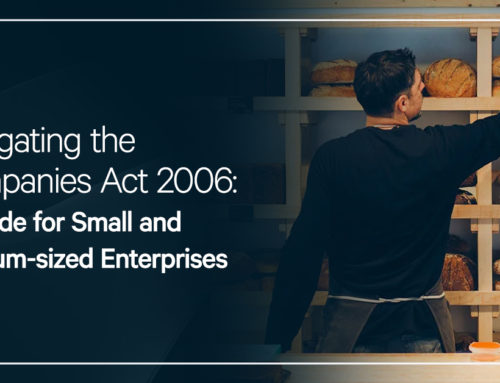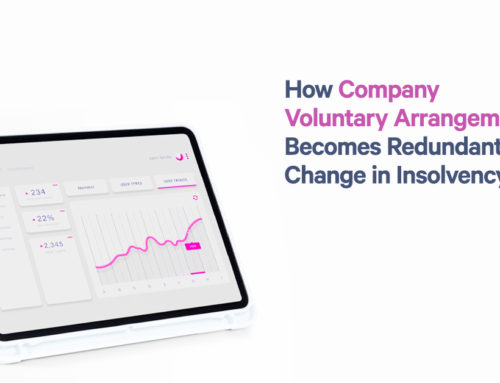When it comes to the liquidation process known as Creditors’ Voluntary Liquidation (CVL), many UK business owners find themselves mired in a sea of misinformation. Rumours and hearsay often paint this legal process in a stark, negative light, leading to unnecessary anxiety and confusion. The purpose of this article is not only to dispel some of the common misconceptions about CVL but also to provide a beacon of understanding, clarifying what CVL entails for a company, its directors, and its creditors.
This clarity is essential, as misconceptions can lead to hesitation and missteps at critical moments, potentially exacerbating financial difficulties. Through this exploration, we aim to demystify CVL, presenting it as a structured, transparent process that, when managed correctly, can be a step towards resolution and recovery for all parties involved.
Myth 1: CVL is a Sign of Irresponsible Management
Fact: One of the most common misconceptions about CVL is that it’s always the result of financial irresponsibility or poor management. In reality, CVL can occur due to unforeseen market conditions, changes in consumer demand, or other external factors that even the most prudent management couldn’t anticipate. In many cases, it’s a responsible step taken by directors to prevent further losses and comply with their legal obligations once they realise that the company is insolvent.
Myth 2: CVL Means the Directors Have Committed Wrongdoing
Fact: Initiating a CVL is not an admission of wrongdoing. It’s a legal process designed to wind up a company’s affairs in an orderly manner. While there are instances where director misconduct is discovered, the CVL process itself is about protecting the interests of creditors and ensuring the fair distribution of company assets. Directors who act promptly and seek professional advice can demonstrate their commitment to fulfilling their duties responsibly.
Myth 3: CVL is the End of the Line for Directors
Fact: Many believe that once a company enters CVL, the directors are banned from business management in the future. This is not the case. Although there are restrictions on using similar company names post-liquidation, directors can indeed go on to manage other companies or start new businesses. The experience of CVL provides valuable lessons that can lead to future success.
Myth 4: You Can’t Control the CVL Process
Fact: Directors retain a significant measure of influence throughout the CVL process, which begins with their ability to appoint the liquidator of their choice. This crucial decision sets the tone for the entire procedure, as the chosen professional will guide the company through the winding-up process. In the early stages, directors are called on to play an active role, cooperating with the liquidator and ensuring all necessary documentation and information are readily available. Such collaboration is vital, as it not only streamlines the process but also enhances the liquidator’s ability to conduct a thorough and fair realisation of assets. Directors’ engagement and transparency can expedite the process, directly impacting the efficiency and effectiveness of the liquidation, ultimately shaping a more favourable outcome for all parties involved.
Myth 5: Creditors Lose Out Completely in a CVL
Fact: While it’s true that not all creditors will receive full repayment, CVL aims to maximise returns for creditors. Assets are sold, and the proceeds are distributed according to statutory rules. In some cases creditors receive a significant portion of what they are owed.
Myth 6: CVL is Always Costly and Complex
Fact: The cost and complexity of a CVL can vary, but it doesn’t always have to be a costly and drawn-out process. With expert guidance, a CVL can be managed efficiently, minimising costs and disruptions. Professional liquidators can help navigate the process, ensuring compliance and expediency.
Myth 7: CVL Offers No Advantages Over Compulsory Liquidation
Fact: CVL is often a preferable alternative to compulsory liquidation, which is court-ordered and can be more abrupt and less flexible. CVL allows for a more controlled wind-down, potentially higher returns for creditors, and a less traumatic process for all parties involved.
Be Informed
The decision to initiate a CVL is not to be taken lightly and is a significant juncture in the lifespan of any company. It calls for a thorough analysis of the company’s financial standing and meticulous consideration of the implications for all stakeholders involved. This process is not merely about acknowledging the present distress but also about projecting the potential outcomes for creditors. Dispelling the common misconceptions about CVL is crucial in this phase, as it allows directors to navigate the complex terrain of insolvency with eyes wide open, ensuring that every step taken is measured and following statutory requirements. It’s a testament to a director’s dedication to ethical business conduct and a reflection of their resolve to manage corporate challenges with integrity.
In these situations, professional guidance and a successful CVL go hand in hand. Expert insolvency practitioners provide more than just procedural oversight; they offer strategic counsel tailored to the unique circumstances of the distressed company. By partnering with professionals, directors can ensure that the liquidation process is compliant with the law and conducted in a way that maximises potential returns to creditors. With the right advice, the intricacies of the CVL can be navigated smoothly, providing much-needed clarity and peace of mind to all parties and ultimately paving the way for a resolution that honours the company’s obligations while acknowledging the challenges faced. This professional support is indispensable, often making the difference between a tumultuous liquidation and a dignified conclusion to the company’s affairs.
Here to help
If you’re considering a CVL or seeking advice on insolvency matters, don’t navigate these complex waters alone. Reach out to our team of seasoned professionals for bespoke guidance and support. Call us on 0800 246 1845 or email us at mail@leading.uk.com to discuss your options and pave the way for a structured and strategic approach to your company’s financial challenges. We’re here to provide clarity and peace of mind and help you make informed decisions in the best interests of your company and creditors.






